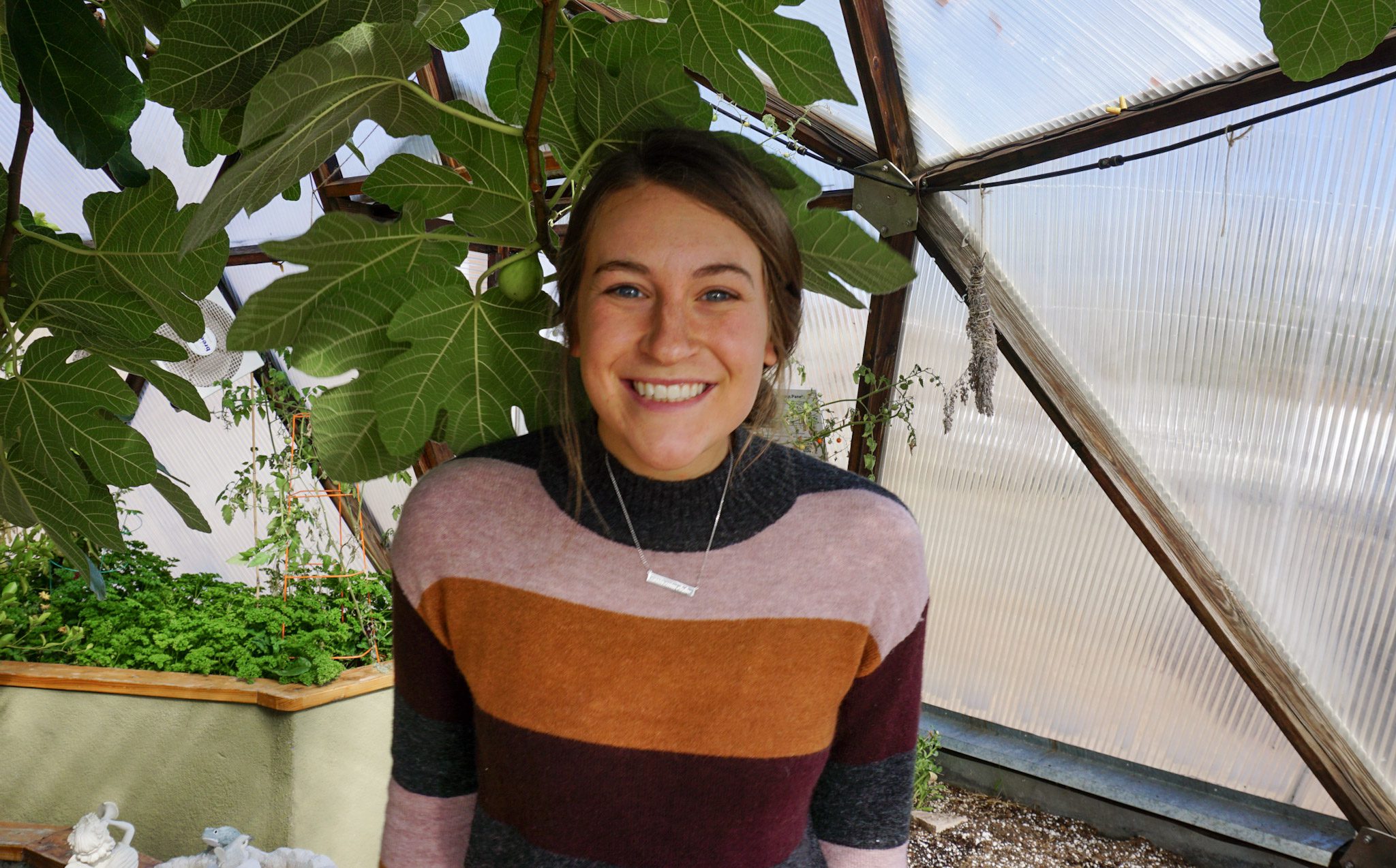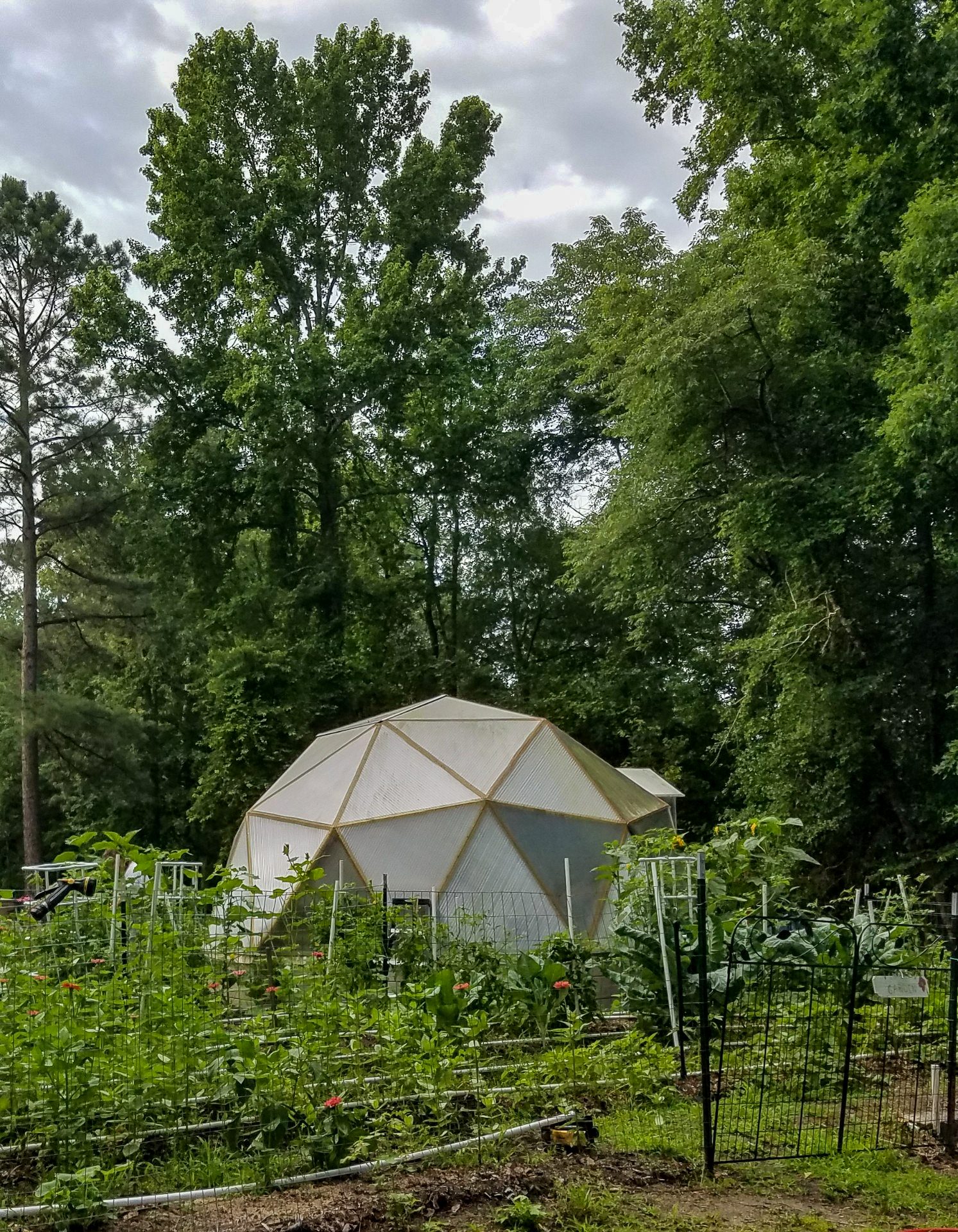

A Geodesic Greenhouse Hardiness Zone 8 – Hot and Humid
Most gardeners who get a Growing Dome do so to protect their plants from snow and cold weather, but that is not the problem for Emy Neuman and her husband, Mark. Clayton, North Carolina, is hot and humid with mild winters. A place where you can garden nine months out of the year. Which leads us to the question, why a Growing Dome greenhouse instead of a basic hoop house? Well, instead of blizzards and hailstorms, they get hurricanes and tropical depressions.
“The local farmers laughed when I said I wanted a greenhouse. They said just do a hoop house. Then Hurricane Florence hit, and there were hoop houses destroyed. So I thought to myself, that is why we got a Dome. Growing Spaces was the most tried and tested.”
Building and Planning a Greenhouse in a Coastal Plain
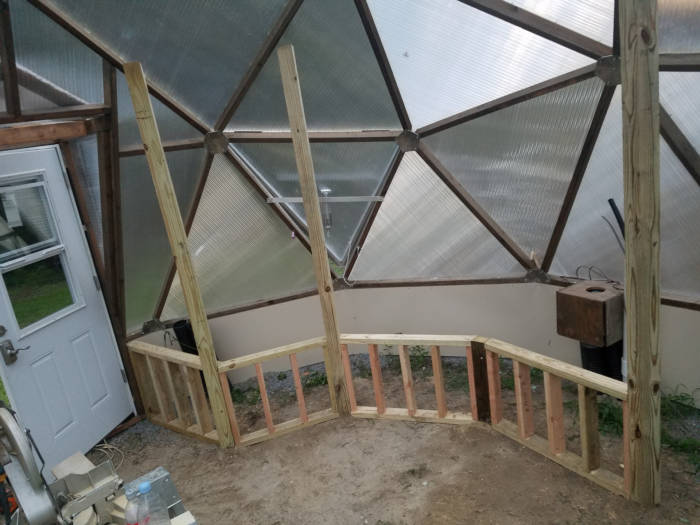
Hurricane-force winds are not their only challenge. Although they live somewhat inland it is still considered a coastal plain. This means they get anywhere from 50 – 60 inches of rain in a year, upwards of double the national average. For that very reason, a lot of pre-planning went into creating their perfect greenhouse.
With the water table only being 3 feet and groundwater often rising to the surface, they had to leave out the above-ground pond that comes standard with all our greenhouse kits. They also used recycled shredded tires from Lowes for the flooring. They are water-permeable, so when it rains 9 inches in a single day, they don’t have to worry about replacing the flooring. It also keeps away burrowing animals!
Emy received her 18’ greenhouse in the spring of 2018. The actual DIY building process took Emy and her family a little over two months. “I worked full time, so we mainly worked on the greenhouse on weekends. Tom, my brother-in-law, is THE GUY. He is a woodworker and very exacting,” which made the building process “a crap ton of fun. He was fascinated by the structure, and so were we.”
Someday, Emy hopes to add a rain collector outside her greenhouse to collect excess water and wick it away from the foundation.
Hydroponics Systems
“Our Dome goal was to be self-sufficient for greens and vegetables while also being as green as possible.” The best way they found to do that was with hydroponics systems.
“The dome is 20 – 30% hydroponics. Three sides are deep culture systems that utilize bell siphons for ebb and flow. They are the way to go if you have the time. It is so much more productive than conventional dirt.” Emy also utilizes the Domes’ hanging space with a raised hydroponics system. In both systems, they grow vegetables like romaine, kale, and the occasional greenhouse or purple peppers, but when it is too hot for leafy greens, they switch to herbs in the warmer months.
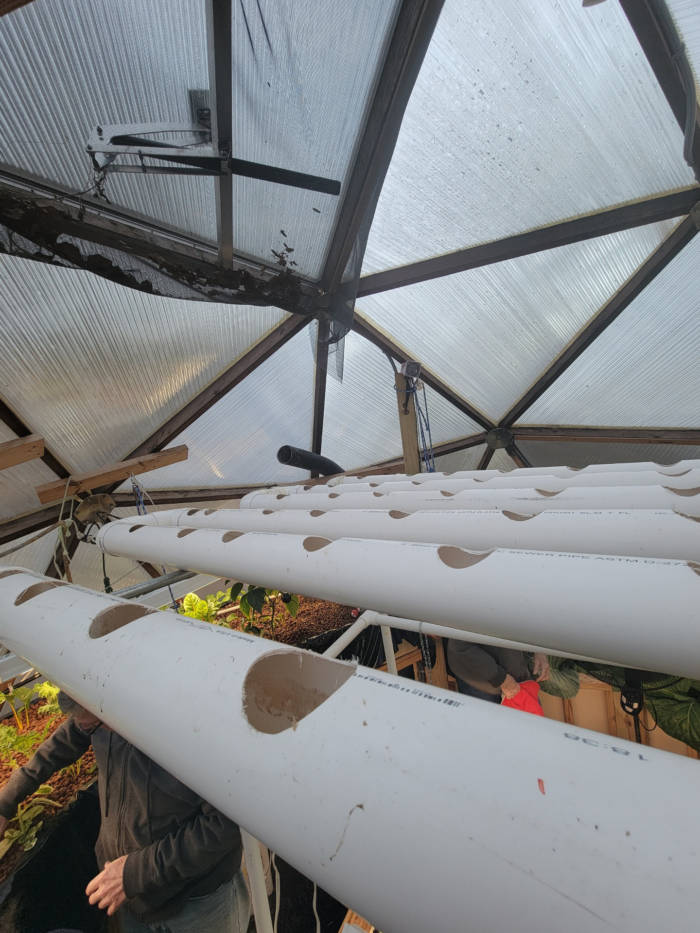


Grow Lights
During the planning phase of their project, Emy used an app called Solar Pathway to determine how much sun the greenhouse would get. She learned that there just wouldn’t be enough winter sun for her plants to thrive due to the way the sun travels and their many trees.
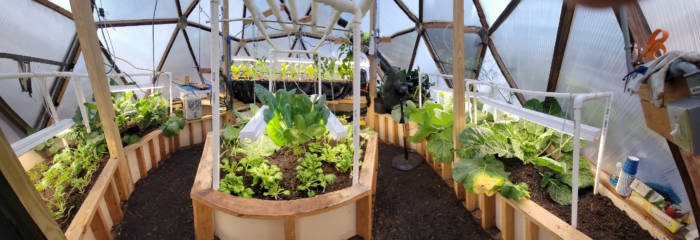
They retrofitted LED grow lights into fluorescent light fixtures and hung them on pulley systems around the greenhouse to combat the minimal winter sun. Using the pulley systems allows Emy to raise and lower the lights depending on the size of the plant. The LED lights themselves use a third of the electricity of regular grow lights.
For insect control most nights, Emy turns all of the lights in the greenhouse and hangs a bug zapper. “It is like a big massacre in the morning white flies be gone.”
Advice for Future Dome Owners in Hot & Humid Climates

Working in a greenhouse with a highly humid climate can have its challenges. Emy does a few things differently that help her succeed. “I water directly onto my plants, but I only do it every 10-14 days. This prevents extra water evaporation from the top layer of soil. Seven days minimum for my heavier feeding plants like cabbage.” You can use the finger test to ensure your plants are still getting the right amount of water.
Some Growing Dome owners use a dehumidifier in the greenhouse, but Emy wanted to keep it as green as possible, and dehumidifiers notoriously use a lot of electricity. Instead, she uses a singular oscillating fan with the greenhouse’s standard vents and a solar cooling fan upgrade which she purchased from Growing Spaces.
Emy keeps an Excel spreadsheet of where she bought seeds, when and where she planted them, their germination rate, and the plant’s production rate. Over the years, she quickly learned that heirloom seeds of Japanese and Southern American varieties tend to do better in her climate.
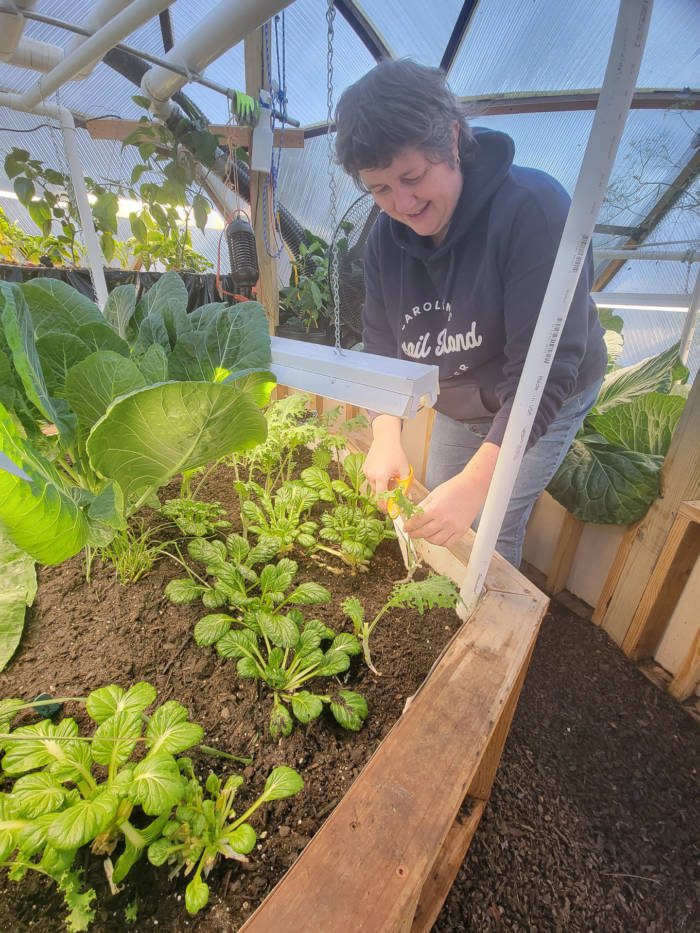
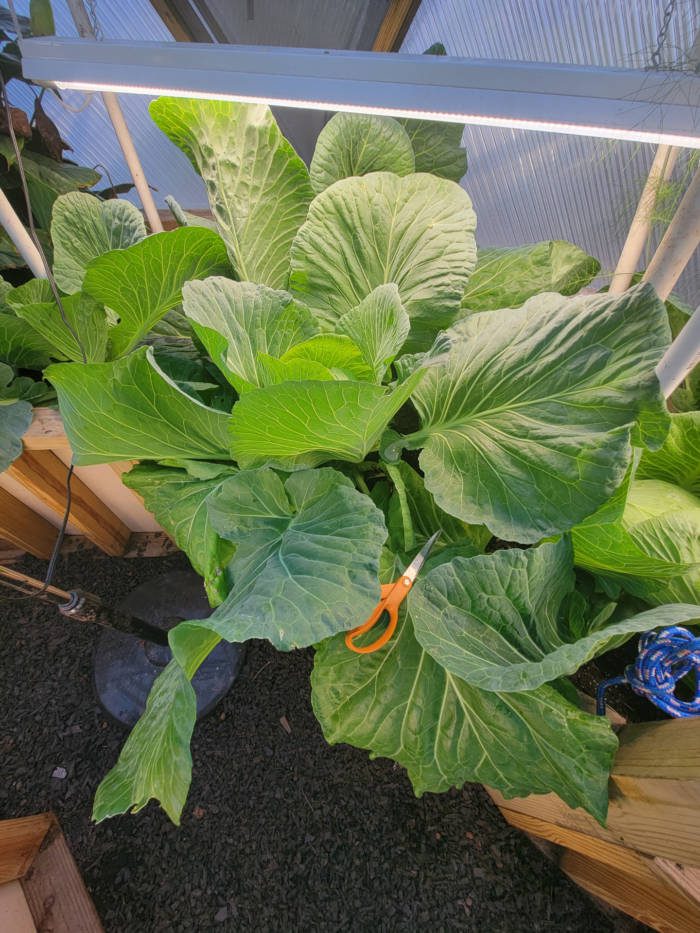
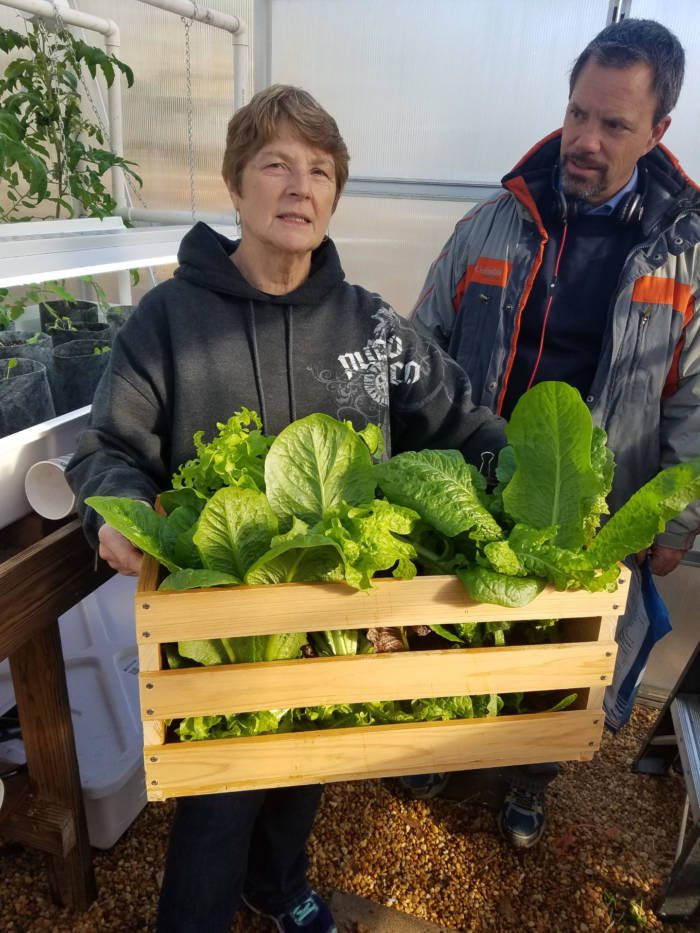
Subscribe to our Happy Grower newsletter to see more.
You can find all of our Featured Growing Dome’s highlighted in our monthly newsletter “The Happy Grower,” on our social media platforms (Facebook and Instagram), and in our blog. At the end of the year, we create an annual calendar that includes every Dome of the Month. We send them to all Dome of the Month participants, along with a gift of Growing Spaces gardening goodies! Apply here.
Join the Inner Circle
An exclusive place for year-round gardeners. Join us to receive our monthly newsletter, "The Happy Grower". In our newsletter we provide community stories, event updates, expert gardening tips, and exclusive offers.
